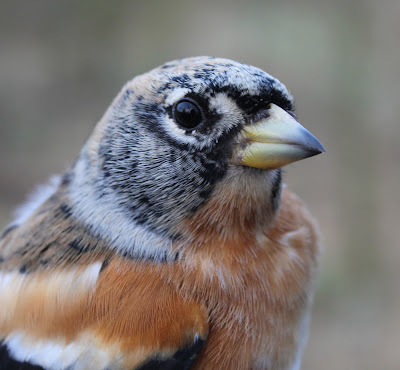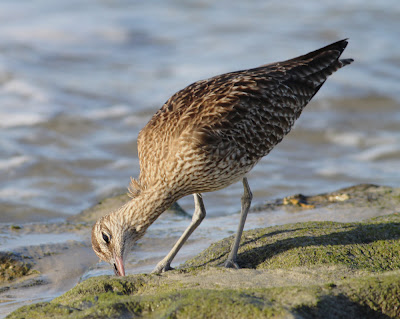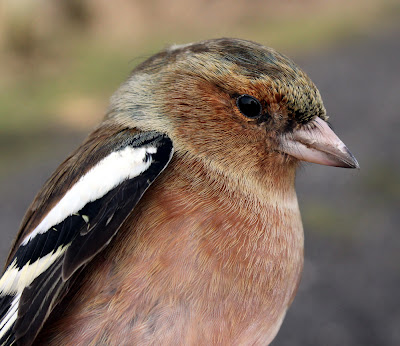After Friday's success with catching Bramblings and Chaffinches there wasn’t much chance a return visit on Saturday would yield a similar result even allowing for the eternal optimism of a birder.
Finches can be highly mobile in their choice of feeding locations, usually having a choice of known feeding spots to select from or joining up with other individuals to find new ones.
So it turned out with just 6 birds caught, although there was yet another male Brambling in the meagre catch of 3 Reed Bunting, 1 Goldfinch and 1 Chaffinch, plus the aforesaid Fringilla montifringilla.
The Brambling was the only one I saw or heard all morning, with even Chaffinches thin on the ground during the morning with less than 20 seen.
Lots of Chaffinches are now in full song with territories forming as the winter flocks thin out and many individuals begin the journey north. It has however been a fascinating spell here since the beginning of November whereby I have caught 23 Bramblings and 65 Chaffinches. How indicative that is of the true composition of the wintering finch flocks about here is hard to say when the ground-hugging and flighty birds prove so difficult to observe in the large stubble fields they favour.
Brambling
Chaffinch
Goldfinch
More than 20 Reed Buntings continue to use the woodland/stubble field margins with 3 second calendar years finding the net on this occasion.
Reed Bunting
The birding was very quiet with little on the move except for a couple of post-dawn Siskins seemingly headed south but possibly just exiting a roost. Birds of prey were the usual 3 or 4 pairs of Buzzard, a pair of Kestrel, two pairs of Little Owl, and a lone-hunting but probably resident Sparrowhawk.
Otherwise - 40 Fieldfare mixed in with feeding Starlings, 3 Redwings at dawn, 40+ Corn Buntings in a nearby stubble, 200 Lapwing overflying from Pilling Moss, and 3 singing Skylark.
Lapwing
Please stay tuned to Another Bird Blog for more news and views of birds soon. This week I am linking to Anni who would rather be birding and Stewart's gallery.



































































.jpg)












